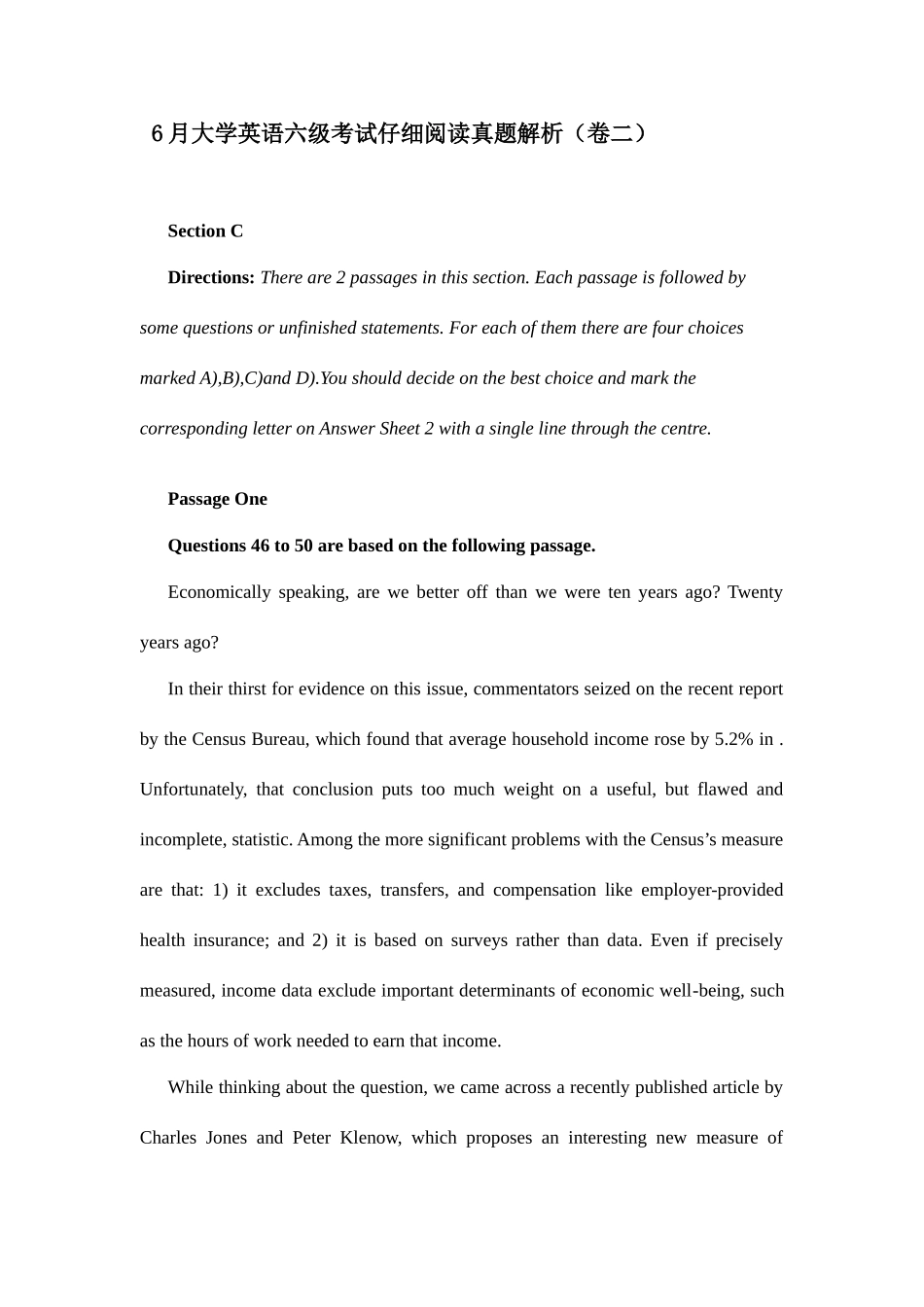6 月大学英语六级考试仔细阅读真题解析(卷二)Section CDirections: There are 2 passages in this section. Each passage is followed by some questions or unfinished statements. For each of them there are four choices marked A),B),C)and D).You should decide on the best choice and mark the corresponding letter on Answer Sheet 2 with a single line through the centre.Passage OneQuestions 46 to 50 are based on the following passage.Economically speaking, are we better off than we were ten years ago? Twenty years ago?In their thirst for evidence on this issue, commentators seized on the recent report by the Census Bureau, which found that average household income rose by 5.2% in . Unfortunately, that conclusion puts too much weight on a useful, but flawed and incomplete, statistic. Among the more significant problems with the Census’s measure are that: 1) it excludes taxes, transfers, and compensation like employer-provided health insurance; and 2) it is based on surveys rather than data. Even if precisely measured, income data exclude important determinants of economic well-being, such as the hours of work needed to earn that income.While thinking about the question, we came across a recently published article by Charles Jones and Peter Klenow, which proposes an interesting new measure of economic welfare. While by no means perfect, it is considerably more comprehensive than average income, taking into account not only growth in consumption per person but also changes in working time, life expectancy, and inequality. Moreover, it can be used to assess economic performance both across countries and over time.The Jones-Klenow method can be illustrated by a cross-country example. Suppose we want to compare the econo...


